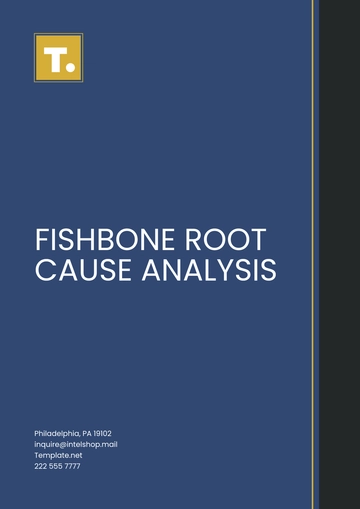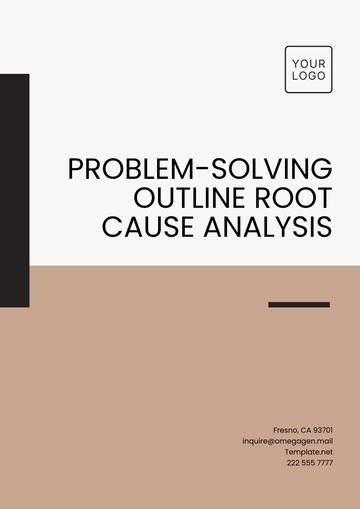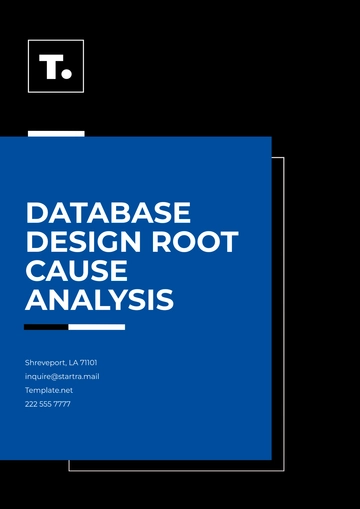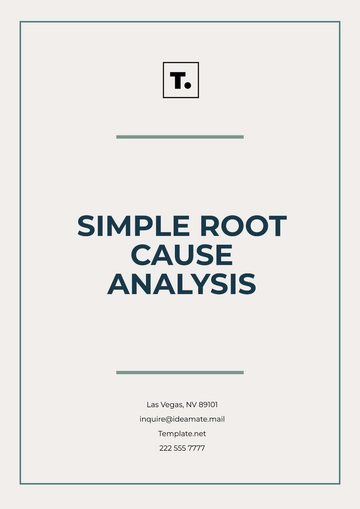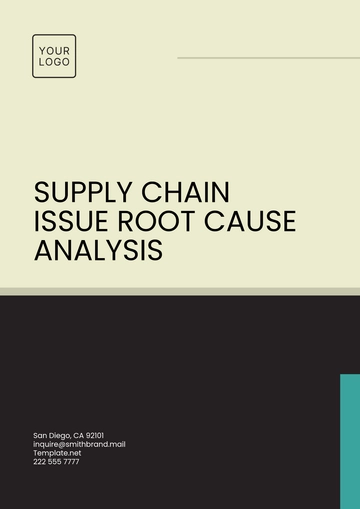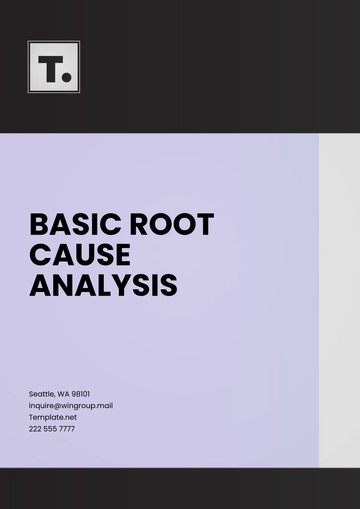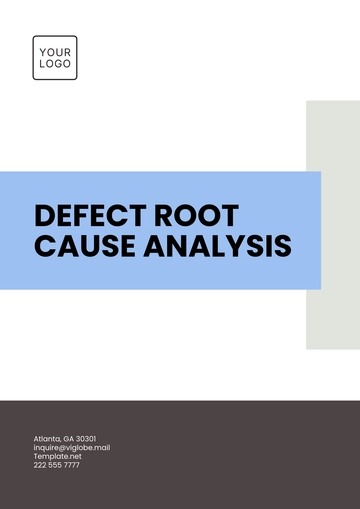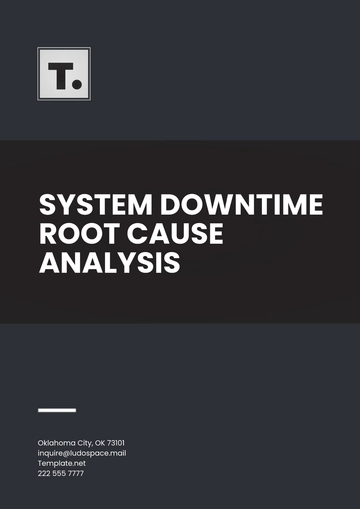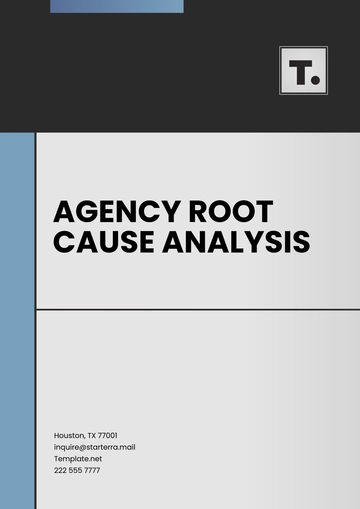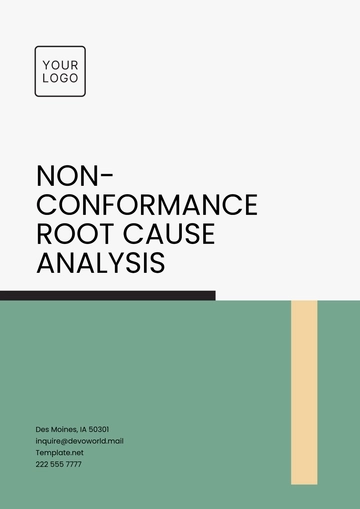Free Sales Analysis of Lost Deals Post-Negotiation

Post-negotiation
I. Introduction
As we navigate the ever-evolving landscape of the technology industry, it is imperative that we adapt and refine our sales strategies to remain competitive and meet the changing demands of our clients. In this pursuit of continuous improvement, we present the Sales Analysis of Lost Deals Post-Negotiation for the third quarter of 2050. This analysis not only seeks to shed light on why certain high-potential deals remained elusive after negotiations but, more importantly, aims to sculpt a roadmap toward greater success in our future sales endeavors. It is a testament to our commitment to excellence and the drive to turn setbacks into stepping stones for growth.
II. Summary and Analysis of Lost Deals
During the third quarter of 2050, we encountered several lost opportunities after reaching the negotiation stage. The following table provides a structured overview of the key details for each lost deal:
Deal no. | Prospect | Deal Value | Reason For Loss | Internal Feedback | Customer Feedback |
1 | [Client's Company Name] | $150,000 | Pricing misalignment and budget constraints | Sales team reports difficulty justifying our pricing compared to competitors. | Acme cited budget constraints as the main reason for not proceeding. |
2 | |||||
3 |
This table offers a concise overview of the lost deals, including their deal numbers, the prospect names, deal values, primary reasons for the loss, internal feedback from our sales team, and customer feedback where available. It provides a structured format for assessing the commonalities and differences among these lost opportunities, facilitating more effective analysis and strategy development.
Pricing discrepancies emerged as a recurring stumbling block in our lost deals, challenging our ability to secure agreements. Our analysis underscores the urgency of recalibrating our pricing strategy to render it more adaptable, providing room for negotiation and tailoring pricing structures to suit diverse client profiles. Furthermore, our sales team will receive enhanced training to bolster their proficiency in elucidating the inherent value of our solutions, facilitating a more compelling argument for our pricing.
III. Improvement Strategies
A. Pricing Strategy
To address the recurring issue of pricing misalignment, we propose a multi-faceted pricing strategy overhaul. This includes introducing tiered pricing models, creating special promotional packages for budget-conscious clients, and empowering our sales team with comprehensive training in value-based pricing. This approach will not only make our pricing more competitive but also ensure our sales team can confidently articulate the unique value we offer.
B. Product Development And Customization
Recognizing the importance of product/service fit, we will collaborate closely with our product development team to bridge any gaps in our offerings. In addition, we will establish a dedicated customization unit to swiftly respond to unique client requirements. By doing so, we aim to broaden our product's appeal and enhance its adaptability to a wider spectrum of client needs.
C. Competitive Intelligence And Positioning
We understand the significance of monitoring and reacting to competitive pressures. As part of our enhanced strategy, we will institute a rigorous competitive intelligence program. This program will not only keep us abreast of competitors' pricing strategies but also provide invaluable insights into their strengths and weaknesses. With this knowledge, we can adapt our sales strategies in real time, allowing us to maintain our competitive edge and win more deals.
These improvement strategies are designed to address the root causes of lost deals, and we are committed to their swift implementation to boost our success rate in future negotiations. We aim to empower our sales team with the tools, knowledge, and support needed to excel in a competitive marketplace while aligning our products and services more closely with client needs.
IV. Training And Development
To empower our sales team with the skills and knowledge needed to address the identified challenges and excel in post-negotiation scenarios, we are implementing a comprehensive Training and Development Strategy. This strategy is designed to not only bridge the gaps in our current approach but also to elevate our team's performance to new heights.
A. Pricing Strategy Mastery
To tackle pricing challenges head-on, we will initiate specialized training modules focused on mastering pricing strategy. Our sales professionals will gain insights into dynamic pricing models, value-based pricing, and pricing psychology. This training will equip them with the confidence and tools needed to navigate price-related objections and deliver compelling value propositions.
B. Product Enhancement Proficiency
We recognize the critical importance of our product/service alignment with client needs. In response, our Product Enhancement Proficiency program will empower our team with a deep understanding of our offerings. They will gain the expertise to identify, recommend, or customize solutions that precisely match client requirements. Collaborating closely with the product team, our sales force will be at the forefront of ensuring our products are tailored to meet diverse customer demands.
Our Competitive Intelligence Expertise initiative will arm our sales team with the latest insights on market dynamics, competitor strengths and weaknesses, and trends in our industry. By being well-versed in the competitive landscape, our sales professionals will be better equipped to adapt their strategies, differentiate our offerings effectively, and proactively address competitive challenges in post-negotiation scenarios.
C. Ongoing Coaching And Mentoring
We understand that learning is an ongoing process. In addition to structured training modules, we are instituting a culture of continuous improvement through coaching and mentoring. Experienced sales leaders and mentors will work one-on-one with our team members, providing personalized guidance, feedback, and support to nurture their professional growth and enhance their negotiation skills.
D. Real-World Simulation And Role-Playing
To reinforce the knowledge gained through training, we will incorporate real-world negotiation simulations and role-playing exercises. These experiential learning opportunities will allow our sales team to practice the strategies and techniques learned in a controlled environment, ensuring they are well-prepared for negotiations.
V. Post-Negotiation Client Feedback Analysis
Client feedback is a valuable source of information that can shed light on our performance and offer insights into the reasons behind lost deals. Incorporating a Post-Negotiation Client Feedback Analysis section into our report enables us to gather and interpret feedback from clients who did not proceed with our offerings.
A. Client Feedback Collection
We will proactively reach out to the key decision-makers from the lost deals, inviting them to participate in structured feedback sessions. Through interviews, surveys, or follow-up discussions, we will aim to gain a deeper understanding of their perspective on our proposals and their decision-making process. Additionally, we will request their views on areas where we can improve regarding product/service offerings and the negotiation experience.
B. Feedback Analysis
Once we have collected the client feedback, our analysis will focus on identifying common themes, pain points, and patterns that emerge from the responses. We will categorize feedback into key areas, such as pricing, product fit, communication, and competitiveness, and assess the frequency and significance of these factors.
C. Continuous Feedback Loop
We acknowledge that client feedback is an ongoing process. To establish a culture of continuous improvement, we will implement a feedback loop, regularly gathering client input post-negotiation. This iterative approach ensures that we remain attuned to client needs and preferences and adapt our strategies accordingly.
VI. Insights And Improvement Actions
Based on the findings from the client feedback analysis, we will develop targeted improvement actions. These actions may include:
Improvement Actions | Details |
Pricing Adjustment | If clients highlight pricing-related issues, we will consider revising our pricing models to align better with market expectations. |
Communication Enhancement | If clients express concerns about communication during negotiations, we will refine our communication protocols to ensure transparency and responsiveness. |
Product Development | In cases where product fit is a recurring concern, we will work closely with the product development team to prioritize necessary enhancements or customizations. |
Competitive Strategy | If competitive factors feature prominently in client feedback, we will reassess our competitive positioning and sales tactics. |
Client Engagement Strategy | We may also develop a client engagement strategy to maintain relationships with clients who did not proceed to nurture future opportunities. |
VII. Competitive Analysis And Benchmarking
A thorough Competitive Analysis and Benchmarking is essential to gain insights into how our offerings compare to those of our competitors in the context of lost deals which includes the following:
A. Competitor Assessment
Analyzing the strategies, strengths, and weaknesses of competitors who won the deals we lost. This will include evaluating their product features, pricing models, and negotiation tactics.
B. Benchmarking
Comparing our performance against industry benchmarks and best practices. This can highlight areas where we excel and those where we need to catch up.
C. Competitive Strategies
Developing a plan to address competitive challenges, which may include refining our unique selling points, pricing strategies, and communication tactics to position ourselves more effectively against rivals.
VIII. Client Relationship And Retention Strategy
Maintaining strong relationships with clients who did not proceed with our offerings is crucial for future opportunities and referrals. The following table outlines our Client Relationship and Retention Strategy:
Strategy | Details |
Post-Engagement Engagement | Regularly reaching out to lost clients to inform them about our latest developments, share relevant industry insights, and maintain a presence in their minds. |
Customized Value Propositions | Tailoring our value propositions based on their feedback and evolving needs. We aim to demonstrate that we listen, adapt, and provide solutions that align with their objectives. |
Recovery And Re-Engagement Plans | Identifying clients who may have been on the fence or who may revisit their decision in the future. Developing strategies to re-engage these clients to convert previously lost opportunities. |
IX. Conclusion And Strategic Outlook
Our Sales Analysis of Lost Deals Post-Negotiation has shed light on critical areas where we can enhance our sales strategies, strengthen our client relationships, and adapt to changing market dynamics. This comprehensive evaluation provides a strategic outlook for our future endeavors, ensuring that we learn from our setbacks and translate those lessons into successes.
As we move forward, we are committed to:
A. Data-Driven Decision-Making
Continuously gathering and analyzing data to inform our sales strategies, ensuring that every decision is rooted in actionable insights.
B. Client-Centric Approach
We place our clients at the heart of our strategies, listening to their feedback, adapting to their evolving needs, and nurturing long-lasting relationships.
C. Continuous Improvement
Fostering a culture of learning, collaboration, and knowledge sharing within our sales team, enabling us to evolve collectively and individually.
D. Market Adaptation
Staying attuned to market and industry trends, enabling us to remain agile and relevant in an ever-changing business landscape.
E. Ethical And Sustainable Practices
Incorporating sustainability and ethical considerations into our business practices, demonstrating our commitment to responsible, values-driven operations.
Our commitment to these principles positions us for a future of growth and success, not merely in terms of winning deals but in delivering genuine value to our clients and creating lasting, mutually beneficial partnerships.
- 100% Customizable, free editor
- Access 1 Million+ Templates, photo’s & graphics
- Download or share as a template
- Click and replace photos, graphics, text, backgrounds
- Resize, crop, AI write & more
- Access advanced editor
Use Template.net's Sales Analysis of Lost Deals Post-Negotiation Template to analyze your lost deals after the negotiation, saving yourself time and energy! This editable and customizable tool, which can be readily edited using our AI Editor Tool, ensures a comprehensive analysis of lost deals post-negotiation, guaranteeing continuous improvement! Edit now!
